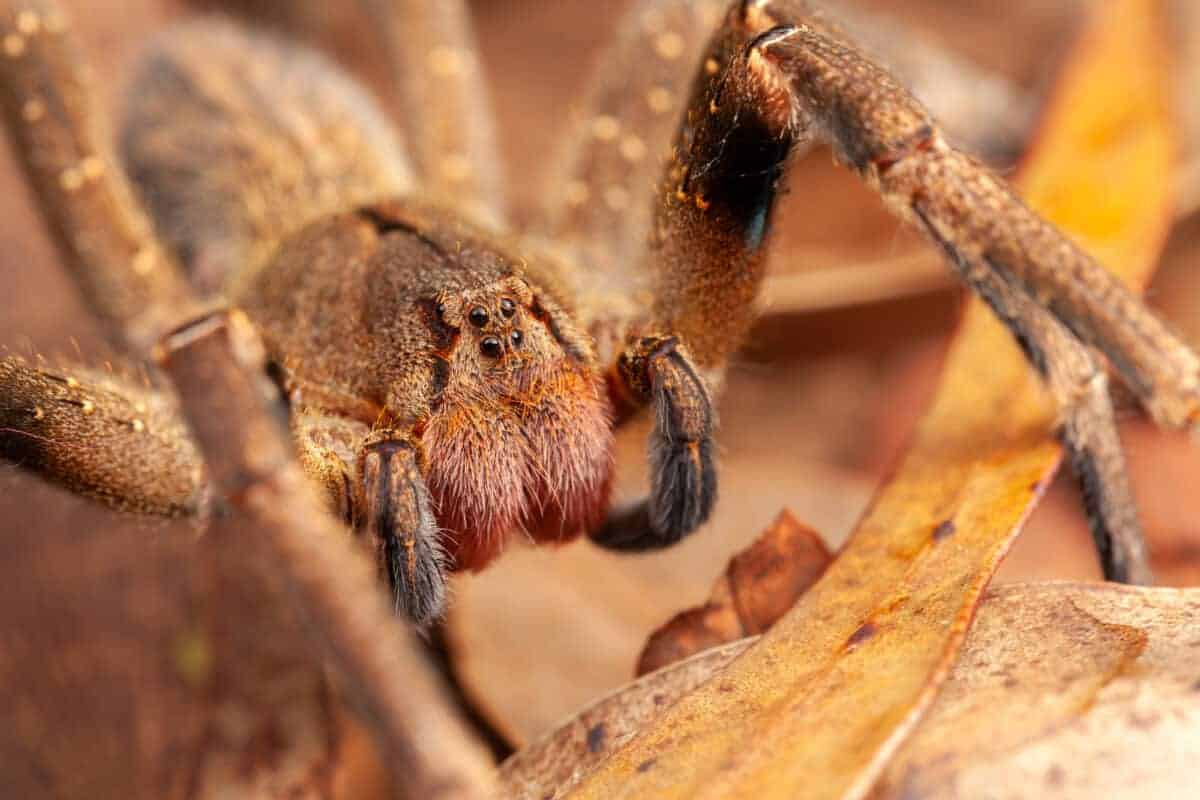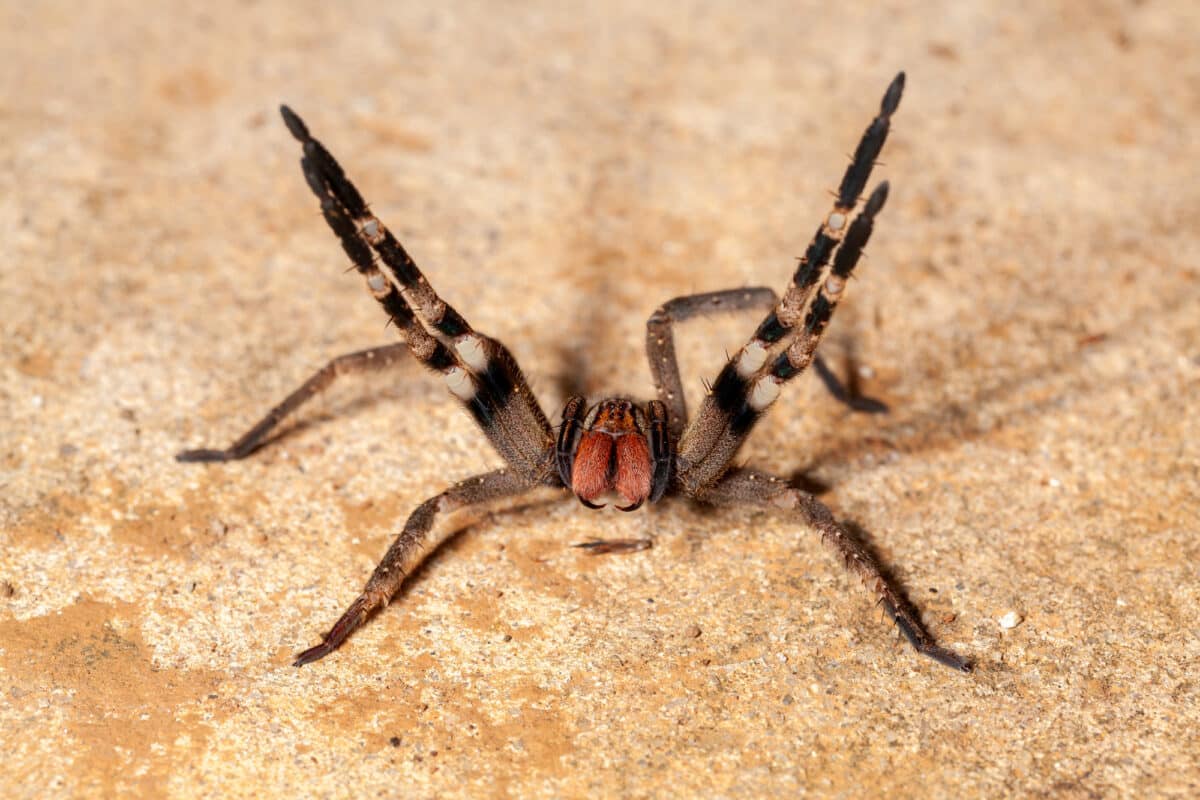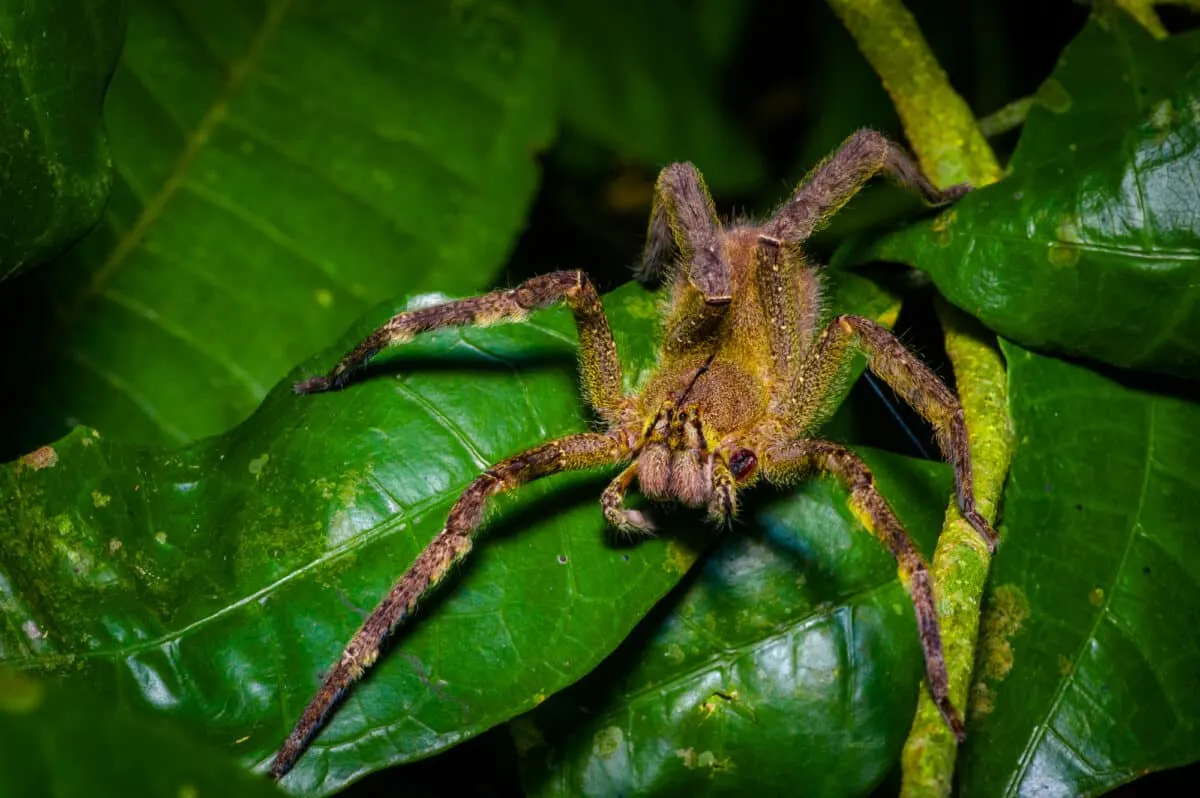Prepare to be captivated by the mysterious world of the Brazilian Wandering Spider, where size becomes a spectacle and nature’s wonders unfold. Among these eight-legged marvels, one specimen stands out—the largest Brazilian Wandering Spider ever recorded. In this article, we’ll delve into the depths of the Amazon rainforest to uncover the secrets of this colossal arachnid, exploring its size, habitat, physical characteristics, behavior, diet, lifespan, and the intriguing effects of its potent bite.
Size Matters: A Spider of Grand Proportions

In the realm of spiders, the Brazilian Wandering Spider is a notable giant, with a maximum body length reaching approximately 5 cm. It’s not just the body that impresses; their long, agile legs can span up to an astonishing 15 cm in larger individuals. Picture a spider with a leg span rivaling that of a human hand, navigating the lush and diverse landscapes of the Amazon rainforest.
Habitat Hunt: Where to Find These Enigmatic Giants
If you’re on a quest to witness these giants in their natural habitat, head to the heart of the Amazon rainforest. Brazilian Wandering Spiders, scientifically known as Phoneutria, prefer the humid, warm environments of South America. They weave their silk in the trees, on the forest floor, and even inside human dwellings, creating an intricate tapestry that reflects their adaptability to various surroundings.
Unveiling the Spider’s Physique: A Masterpiece of Nature’s Design
These spiders boast a captivating appearance, with varying shades of brown, intricate patterns, and long, agile legs that allow them to traverse their environment with ease. Their bodies are streamlined, and their movements are both graceful and stealthy, making them expert hunters in the densely vegetated rainforest.
The Nomadic Wanderer: Understanding the Behavior of Phoneutria

Unlike their web-building relatives, Brazilian Wandering Spiders are nomadic hunters. They don’t wait patiently in a web for prey to stumble upon them. Instead, they actively roam the forest floor, hunting for insects, small animals, and even other spiders. This dynamic hunting strategy is a testament to their adaptability and efficiency as predators.
A Culinary Palette: What’s on the Menu?
The diet of the Brazilian Wandering Spider is diverse and fascinating. From crickets and beetles to small lizards and even small mammals, these arachnids are voracious predators. Their potent venom aids in subduing and digesting their prey, ensuring they have the energy to sustain their nomadic lifestyle.
Lifespan in the Wild: The Dance of Birth and Death
In the intricate dance of life, Brazilian Wandering Spiders follow a typical spider life cycle. After hatching from eggs, spiderlings undergo a series of molts before reaching maturity. In the wild, their lifespan can vary. Evidently, with factors such as predation, environmental conditions, and availability of resources influencing their longevity.
The Bite that Commands Respect: Unraveling the Effects
While the Brazilian Wandering Spider’s bite is rarely fatal to humans, it demands respect and immediate medical attention. Their venom contains neurotoxins that can cause symptoms ranging from severe pain and swelling to muscle spasms. It’s crucial to note that these spiders are generally non-aggressive. Furthermore, they prefer to retreat rather than confront, but caution is always advised when encountering them.
Wrapping Up with the Largest Brazilian Wandering Spider

In the heart of the Amazon rainforest, the largest Brazilian Wandering Spider ever recorded roams. Additionally, weaving its story of adaptability, mystery, and survival. From its impressive size to the intricate details of its habitat, physique, behavior, diet, and the effects of its potent bite. Evidently, this arachnid holds a place of fascination in the intricate tapestry of nature. As we continue to explore the wonders of the natural world, let the Brazilian Wandering Spider stand as a testament to the marvels that await those who dare to venture into the depths of the wild.
Thank you for following along with this article –
Next up in the animal kingdom:
Join our Forum for free today!

- Big Cats Love Mouthing Affection - July 22, 2024
- Kind Elephant Merciful To Lion Cubs - July 22, 2024
- Beachgoers Save Massive Shark Stranded In Florida - July 22, 2024

